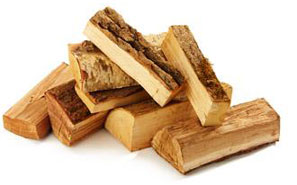Burning properties of different species of wood

Posted on
19
March,
2014

Ash Good Low moisture content when green - little seasoning needed
Beech Good Season for a year; excellent deadwood species
Hornbeam Good Season for a year; more common in southern Britain
Hawthorn Good Season for a year; thorns make handling more difficult
Crab apple Good Gives off pleasant smell - useful for cooking
Oak Good Season for a year; excellent for keeping fire lit overnight
Field maple Good Season for a year; grows better on more fertile soils
Elm Good Season for a year but often found dead and ready to burn
Hazel Good Good coppice species; important for wildlife conservation
Birch Fast Burn with slow burners such as wild cherry
Wild cherry Slow Burn with fast burners such as birch; pleasant smell
Blackthorn Slow Season for a year; burn with fast burners such as birch
Rowan Slow Burn with fast burners such as birch; attractive berries
Holly Slow Burn with fast burners such as birch and alder
Yew Slow Very dense timber and slow growing
Alder Fast Burn with slow burners such as wild cherry
Poplars Fast High moisture content - season for a year
Willows Fast High moisture content - season for a year
Lime Slow Good coppice species; burn with fast burners such as birch
Rhododendron Good Very invasive non-native species on acidic soils - eradicate
Sycamore Fast Invasive in ancient woodlands - eradicate
Sweet chestnut Fast Not invasive but gradually remove and replace with hazel
Conifers Fast Season for a year - pine, spruce, cypress burn quickly; Douglas fir, larch burn slower